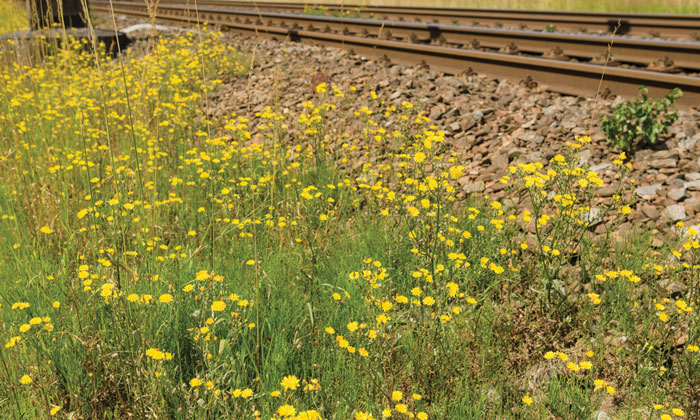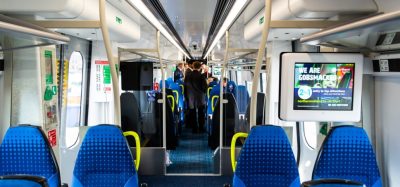Making ProRail a more sustainable railway network operator
Posted: 19 March 2017 | | No comments yet
ProRail – the Dutch railway network operator – is passionate about sustainability. But a completely sustainable railway doesn’t just materialise overnight. Small incremental steps are being taken every day with significant progress being made in several key areas. In this article for Global Railway Review, Karen te Boome, Manager of Environment and Sustainability at ProRail, highlights the strides that have been taken within the Netherlands’ rail network and its carriers toward its ultimate goal of carbon neutrality.


ProRail aims to be a CO2 neutral organisation by 2030. In order to achieve this, we are making energy savings where possible – for instance by replacing our company cars with greener models and switching to renewable energy sources. By 2030 we want to be self-sufficient in terms of electricity generation. This will be achieved by placing solar panels on the roofs of all suitable stations and platforms, and by placing screens along our tracks, which will contribute to reducing noise pollution and generating electricity at the same time. Track-side cuttings will be turned into biogas, platform paving or desk tops. Thanks to smart reuse and appropriate maintenance, the natural resources required for the construction of new tracks and stations will be minimised; this is our contribution to the circular economy.
Energy from renewable sources
Since January 2012, all our electricity needs have been met by green energy generated by wind farms. Solar panels placed on our stations and the new traffic control post in Utrecht have already generated 500,000kWh of electricity in 2016. To continue increasing this figure – and in an effort to create the largest ‘sun roof’ in the Netherlands – we will intend to install more solar panels, including on platform covers. In Eindhoven, for instance, we will be placing solar panels on platform covers during 2017, which will double the current solar energy production. At the moment, we source 25% of our natural gas from renewable sources. This will gradually be increased to 100% by 2020.
Energy consumption
On an ongoing basis we will improve our energy efficiency by 2% per annum, thus realising a 30% improvement by 2030, in comparison with 2015. This really makes a significant difference, as we consume as much energy as 19,000 average Dutch households. In order to achieve this, one measure will be installing LED lighting on our platforms and in our marshalling yards. Another example is the installation of smart lighting systems on most platforms, which will dim automatically when there are no passengers in the vicinity. We are also co-operating with the train operators on our network to reduce the energy consumption of trains, for instance through the ‘Trein op de Lijn’ application, developed to assist drivers with operating their trains more economically.
At the same time, we are making the transition from the use of natural gas to electricity. For example, the current gas-fuelled system which heats switches in frosty conditions will be replaced by an electrical one, and the connections and usage will be monitored more closely. A potentially very significant change will be the increase of the voltage on the overhead wires from 1,500 to 3,000 volts. This will allow trains to accelerate faster and for train operators to recover more energy. If this investment goes ahead, it could make the Dutch railway sector approximately 15% more energy efficient.
The reuse of waste and economical use of resources
The infrastructure managed by ProRail requires a lot of resources, for example with laying tracks, building the stations, and general maintenance. We are paying greater attention to environmental issues during both the design and realisation phases of our infrastructure. We want to reuse our waste, be more economical with raw materials, and encourage the development of sustainable alternatives. By 2030 we aim to have reduced the proportion of waste materials that end up in an incinerator or at a landfill site to 5%, while 10% of used materials should be disassembled and made fit for reuse. We adopt the Cradleto-Cradle philosophy; considering all possibilities for reusing and recycling when designing our parts. The adoption of DuboCalc – software developed to calculate the environmental impact of infrastructure projects – will enhance our ability to explicitly manage our way to the attainment of these goals.
Nature
The rail network managed by ProRail also includes the trackside, which covers an area of 3,200 hectares in total. As such, ProRail is one of the bigger land managers in the Netherlands. Trackside shoulders (and ditches) are of great importance, both as wildlife habitats and as the corridors between adjacent areas of natural beauty. We envisage that, by 2030, the trackside areas will not only be the green lining of our rail network, but also harbour a wide variety of (rare) plants and wildlife. We are working towards the ecological management of these areas, so that they can sustain bees and other insects, and are placing special nest boxes to accommodate bees, reptiles and bats. At the 80 locations where our tracks dissect nature reserves, we have realised elevated wildlife crossings (so-called ‘ecoducts’), as part of a government-sponsored long-term initiative to undo the fragmentation of natural areas.
Nature will become an integral part of our network management and maintenance, because we feel responsible for the bio-diversity of the areas we manage. In co-operation with our partners, we want to preserve – and where possible increase – the quality of the natural environment.
Noise and vibration
ProRail is continuously working on improvements that target the causes of noise pollution. Some good examples include the new level crossing bell that adjusts its ringing to the noise levels of its surroundings, and research into the interaction between wheels and rails (‘wheel-rail conditioning’), which has resulted in the development of a device that deposits a special lubricant to help reduce the squealing sound in bends. Train movements and construction activities are common causes of vibrations. Mitigating the environmental impact of these vibrations is a complex matter. ProRail is working hard on several improvements: we are researching the relationship between the various aforementioned factors and the occurrence of vibrations; and we are evaluating new technologies, such as Under Sleeper Pads (USPs), which is one particular way to reduce the transmission of vibrations. Engaging the market To realise our ambitions, we procure services and products from third parties. In doing so, we encourage and reward the suppliers who help us achieve our goals. One of the tools we use for this purpose is the CO2 Performance Ladder. We will more pro-actively engage with concrete sustainable initiatives instigated by our suppliers, and look more kindly on any of their innovations that are eco-friendly as well as marketable. We collaborate with commercial parties and universities to identify the most promisingly innovative themes at an early stage, and also promote research into new techniques, ideas and solutions ourselves. This is already very real and concrete. We have adopted the principles of the covenant for sustainable infrastructure development.
The essence of this covenant is to apply the same systematic way of working and a uniform set of tools and applications across the construction industry, resulting in a more environmentally-friendly execution of building activities. This means that sustainability is a consideration in all aspects of any development from the time of its inception; that ProRail’s ambitions to become more sustainable are translated into concrete projects; and that the projects with the greatest potential to improve sustainability are prioritised. Our tendering procedures are geared towards innovation; criteria relating to sustainability play an important role in awarding contracts and we use a uniform set of tools. Applications such as DuboCalc; the CO2 Performance Ladder; and, in collaboration with NS and W/E consultants, the Assessment Tool Sustainable Stations, help us quantify the environmental impact of the infrastructure projects that we tender and award.
Co-operation
In order to get sustainability ingrained into the fabric of our organisation, and to make it part of ‘business as usual’, we have to co-operate. This is exactly what we do with our suppliers and other stakeholders. We share real-life experiences and work jointly towards sustainable solutions and innovations.
Biography
Karen te Boome has been leading the team that is responsible for ‘environment and sustainability’ at ProRail for two years. Her ambition is to make travelling by train more sustainable by reducing the use of energy and in other creative ways; such as reusing materials and use the savings for other sustainable measures.






